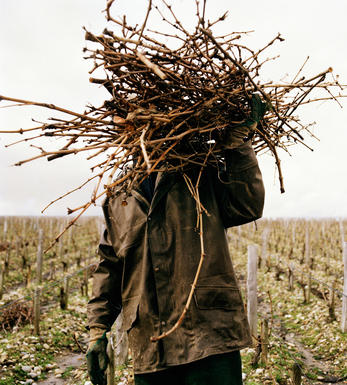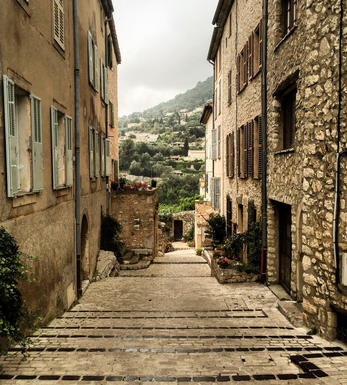
2017 Domaine du Grand Cros, Le Grand Cros Rosé, Provence

Critics reviews
Richard Hemming MW, jancisrobinson.com
Winemag.com
About this WINE

Domaine du Grand Cros
Le Grand Cros is first a story about a couple, Jane and Hugh Faulkner, who fell in love with this pretty corner of Provence in 1989, with vineyards planted over the foothills of the Massif des Maures, surrounded by pine and olive trees and dry stone terraces. Slowly they restored the property then in 1999, their son Julian took over the running of the domaine. He carried out major restructuring of the vineyards and upgrade of the winery with the goal to get more out of the potential terroir and surrounding natural environment.
Julian has strived to blend science and art. However science does not have answers to everything and its at that point that his instinct as a winemaker takes over. He makes quality wines, that reflect very much the domaine's style, spirit and personality.

Côtes de Provence
Reputedly the source of Louis XIV’s favourite wines, Côtes de Provence lies in the south-east of Provence and overlaps with the Var department. Coteaux Varois is sandwiched between two parts of the Côtes de Provence appellation; the enclaves of Cassis, Bandol and Palette are also nestled between pockets of land to the south and east of Côtes de Provence.
Eighty percent of the appellation’s production is dry rosé wine, distinguished by an inimitable pale-pink colour and elegant flavours. Cinsault and Grenache dominate in the region’s rosés, augmented with the occasional dash of the local, intensely aromatic Tibouren. The AOC regulations stipulate that at least 20 percent of a rosé blend must come from wine made using the saignée (literally, ‘bleeding’) method.
The remaining 20 percent of the region’s production is dedicated 15 percent to red and five percent to white wines. Following the Phylloxera epidemic known as the Great French Wine Blight in the late 1800s, much of Côtes de Provence was replanted with the high-yielding Carignan vine.
Since the late 1990s, a host of new, small, dynamic estates has started to focus on a new-wave style of red wines, characterised by full-fruit ripeness, concentration, and soft tannins and using ameliorateur varieties such as Syrah and Cabernet Sauvignon, which are gradually replacing the once ubiquitous Carignan.

Grenache/Garnacha
Grenache (Noir) is widely grown and comes in a variety of styles. Believed to originate in Spain, it was, in the late 20th century, the most widely planted black grape variety in the world. Today it hovers around seventh in the pecking order. It tends to produce very fruity, rich wines that can range quite widely in their level of tannin.
In many regions – most famously the Southern Rhône, where it complements Syrah and Mourvèdre, among other grapes – it adds backbone and colour to blends, but some of the most notable Châteauneuf du Pape producers (such as Château Rayas) make 100 percent Grenache wines. The grape is a component in many wines of the Languedoc (where you’ll also find its lighter-coloured forms, Grenache Gris and Blanc) and is responsible for much southern French rosé – taking the lead in most Provence styles.
Found all over Spain as Garnacha Tinta (spelt Garnaxa in Catalonia), the grape variety is increasingly detailed on wine labels there. Along with Tempranillo, it forms the majority of the blend for Rioja’s reds and has been adopted widely in Navarra, where it produces lighter styles of red and rosado (rosé). It can also be found operating under a pseudonym, Cannonau, in Sardinia.
Beyond Europe, Grenache is widely planted in California and Australia, largely thanks to its ability to operate in high temperatures and without much water. Particularly in the Barossa Valley, there are some extraordinary dry-farmed bush vines, some of which are centuries old and produce wines of startling intensity.


Buying options
Add to wishlist
Description
A blend of Cinsault, Cabernet, Carignan and Grenache, the colour is pale with raspberry, citrus and floral aromas. Juicy acidity combines with lemon and pink grapefruit notes on the palate. Wonderfully refreshing.
Fiona Hayes, Wine Buyer
wine at a glance
Delivery and quality guarantee